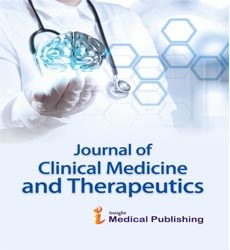An Evaluation of Opportunistic Fungi in the Broncho Alveolar Lavage Samples
Abstract
Opportunistic fungi are a constantly evolving group of pathogens that When the immune system cannot raise an adequate response, they are activated, begin to multiply, and soon overwhelm the body's weakened defenses. This study was performed to evaluate the amount of opportunistic fungi in BAL samples of diverse group of patients by interpreting the results of the study based on direct examination and culture methods. After receiving patients’ consent forms, and biography,a total of 120 BAL samples was taken by a pulmonary physician, and a part of the sample transferred to mycology laboratory for microbial examinations. From each BAL sample, 100 μl was cultured on Sabouraud Dextrose Agar (SDA) and for microscopic observation the sample was centrifuged and two smear was prepared from the sediment using Giemsa staining and 10% KOH. Yeast cells were counted on SDA and Direct smears were precisely examined for presence of yeasts or pseudohyphae, pneumocystis and filamentous fungi. The etiologic agents were identified by standard morphological and molecular Methods. Susceptibility of the filamentous isolates to itraconazole and voriconazole was evaluated using microdilution method. At the end, the results were analyzed with SPSS v 22. From the total of 120 BAL specimens 59 (49.2%) yeast colonies grew on SDA, which were considered to be normal flora, colonization, or infection. Out of 59 BAL samples containing yeasts, 29 samples contained> 10,000 colonies and were isolated from patients with pulmonary symptoms notably (asthma, cough, sputum, and hemoptysis). Also pseudohypha and blastoconidia of yeasts was seen in direct smear of 15(51.7%) specimens with the mean of colony count of (42,000/mL) in culture media.C. albicans was the common fungus in the BAL samples of patients with pulmonary symptoms.
Open Access Journals
- Aquaculture & Veterinary Science
- Chemistry & Chemical Sciences
- Clinical Sciences
- Engineering
- General Science
- Genetics & Molecular Biology
- Health Care & Nursing
- Immunology & Microbiology
- Materials Science
- Mathematics & Physics
- Medical Sciences
- Neurology & Psychiatry
- Oncology & Cancer Science
- Pharmaceutical Sciences
